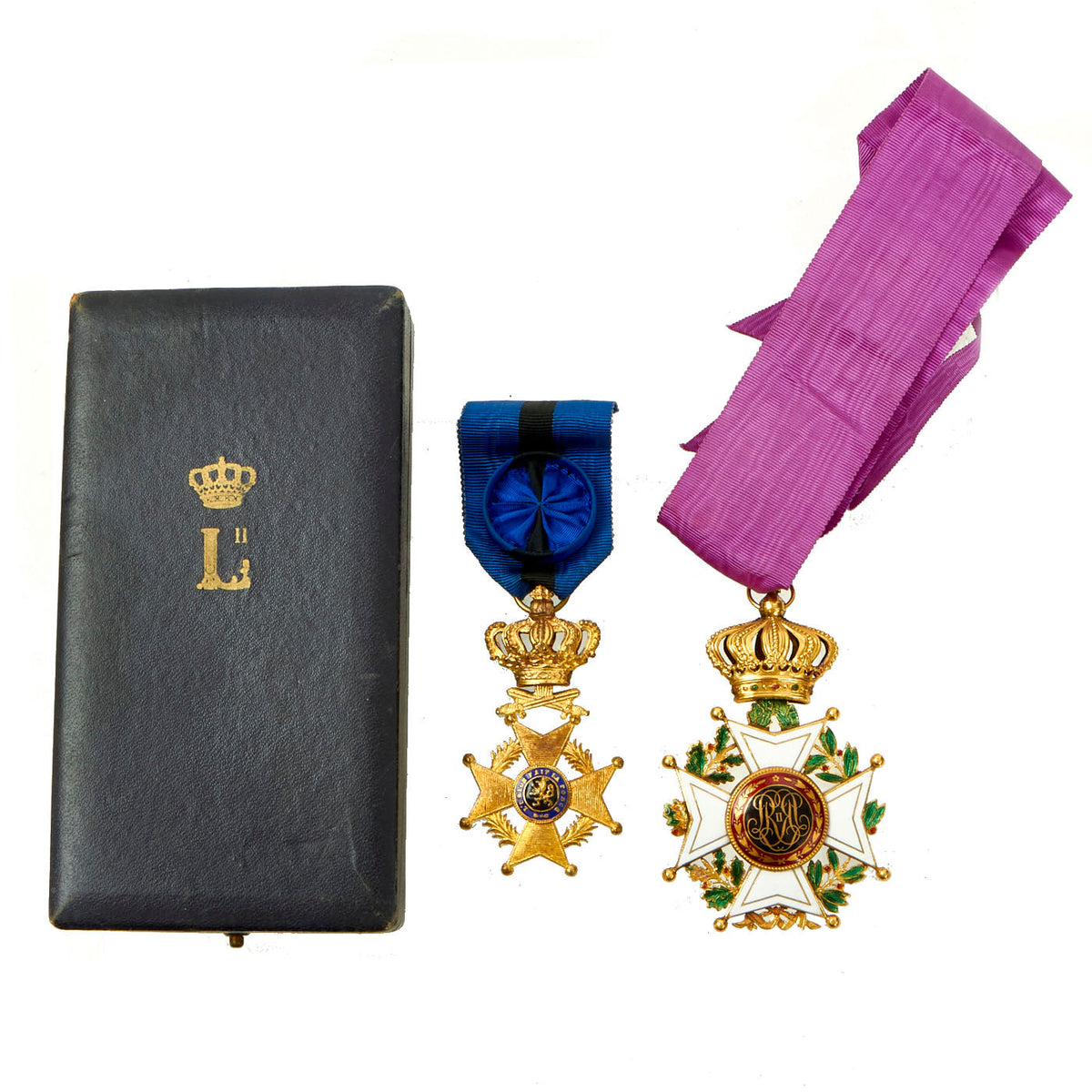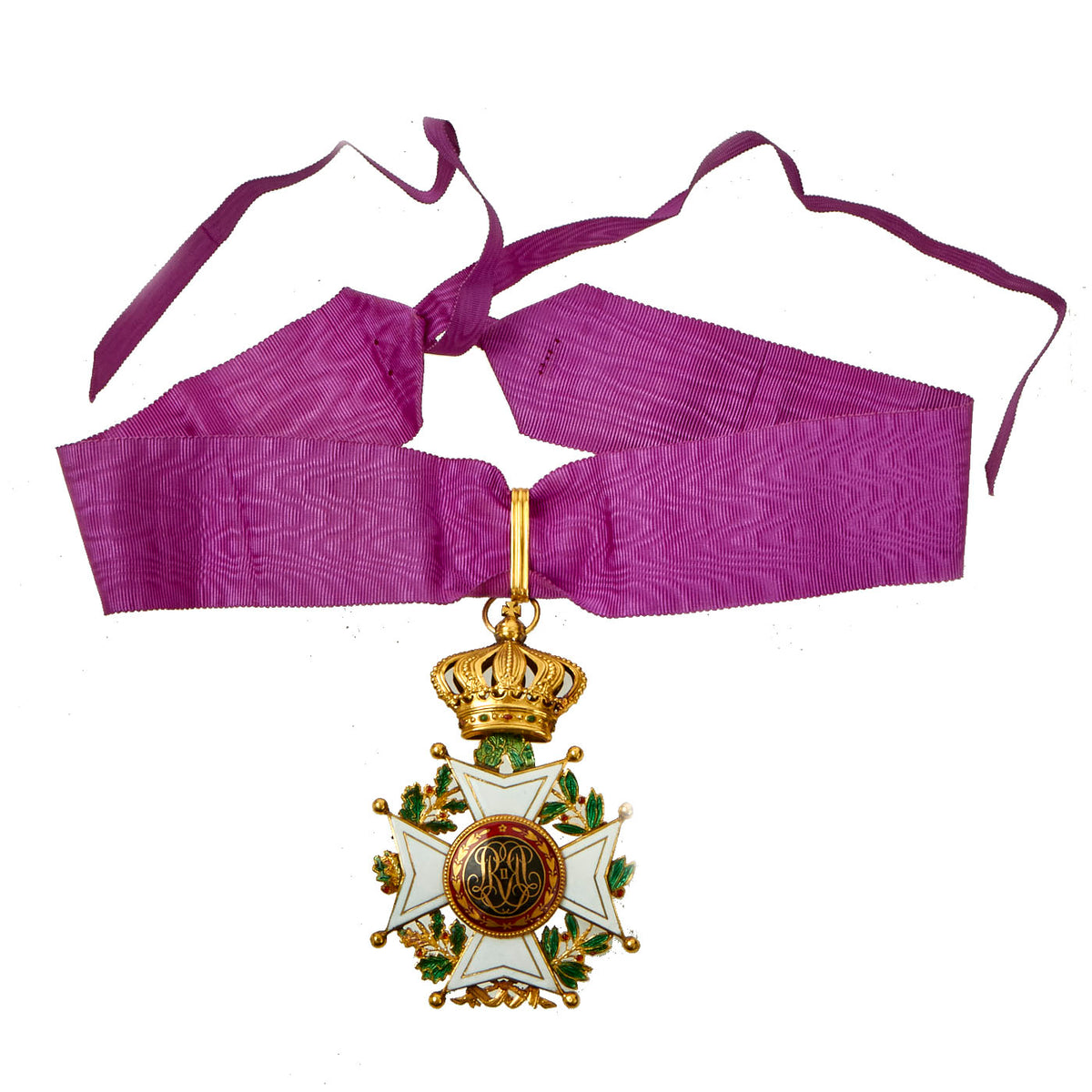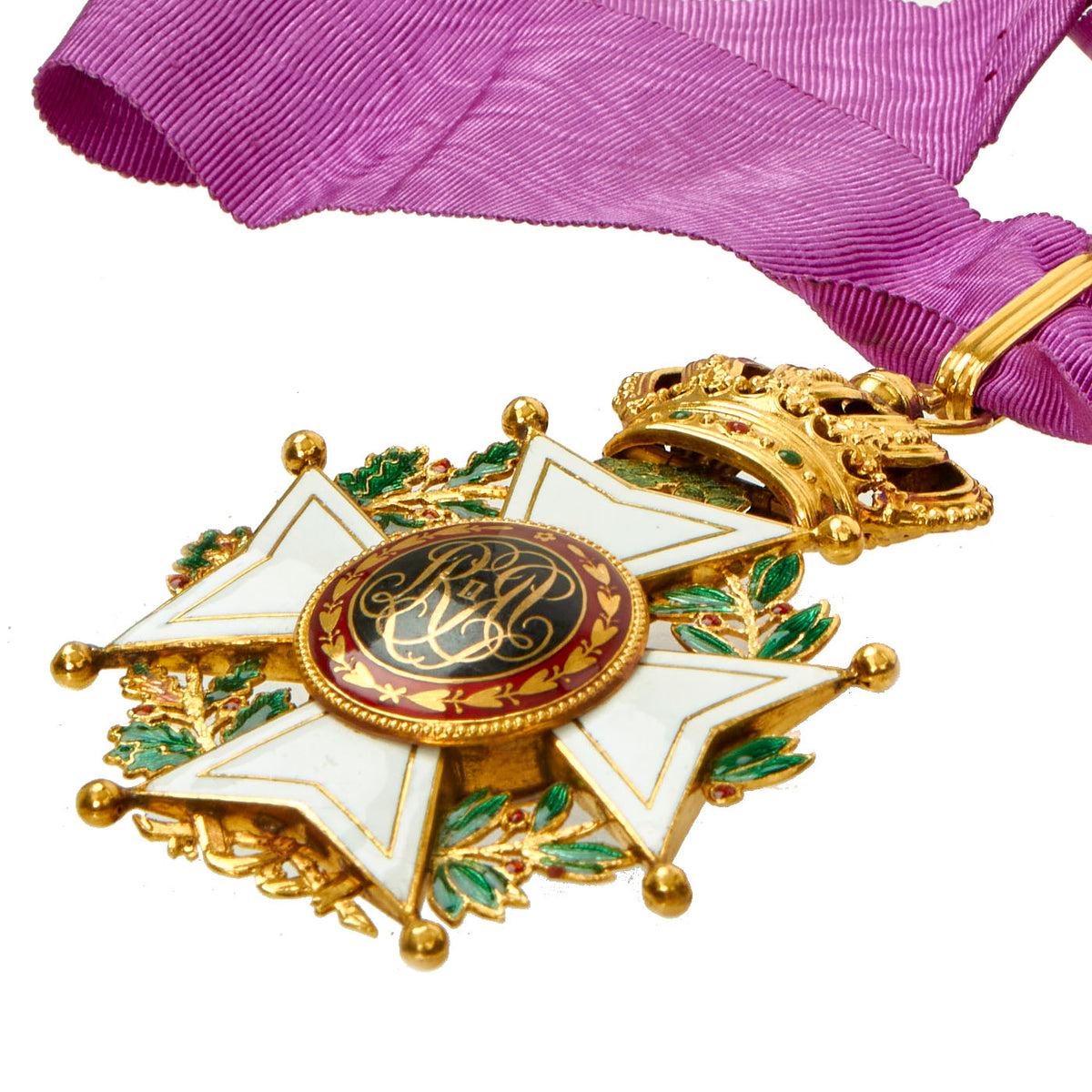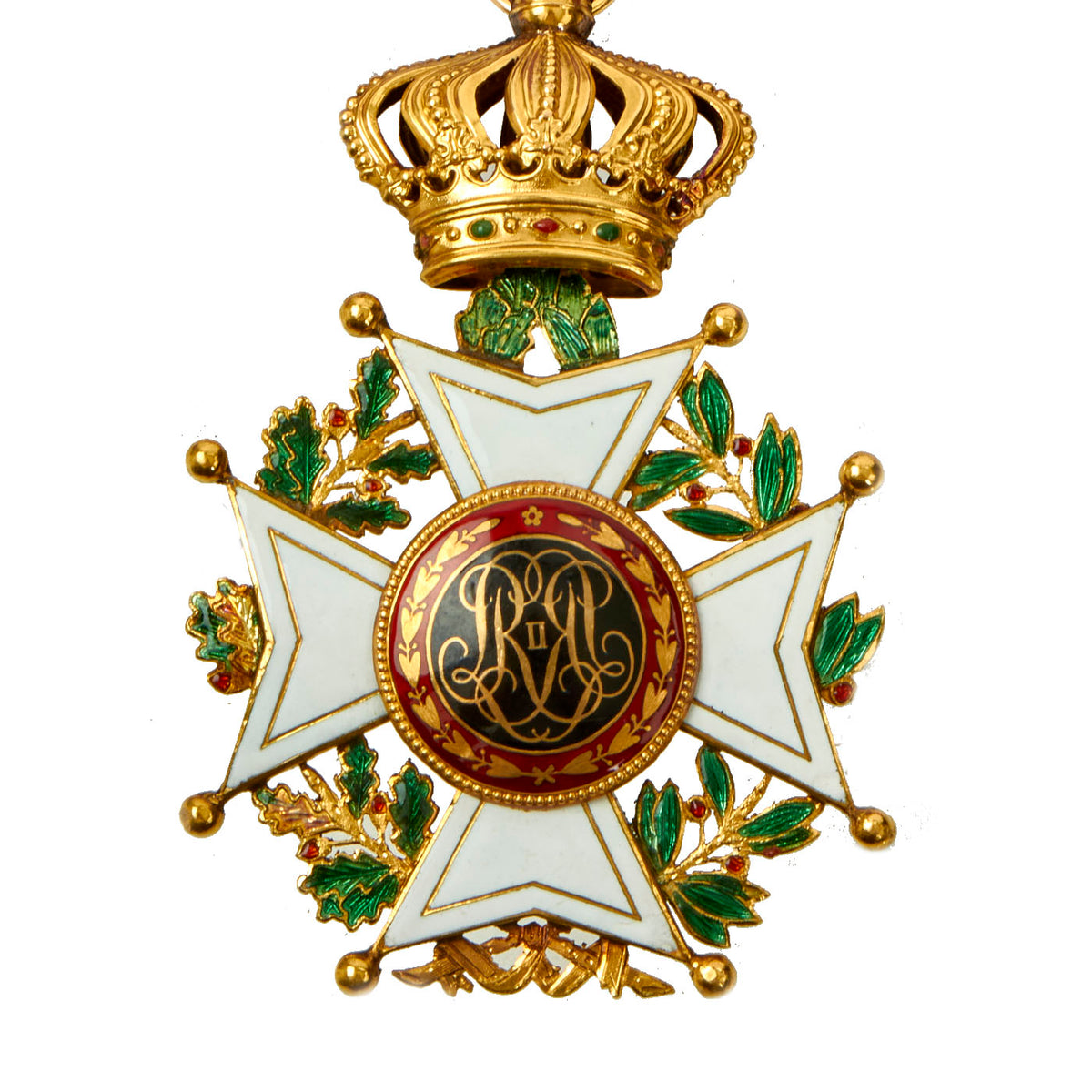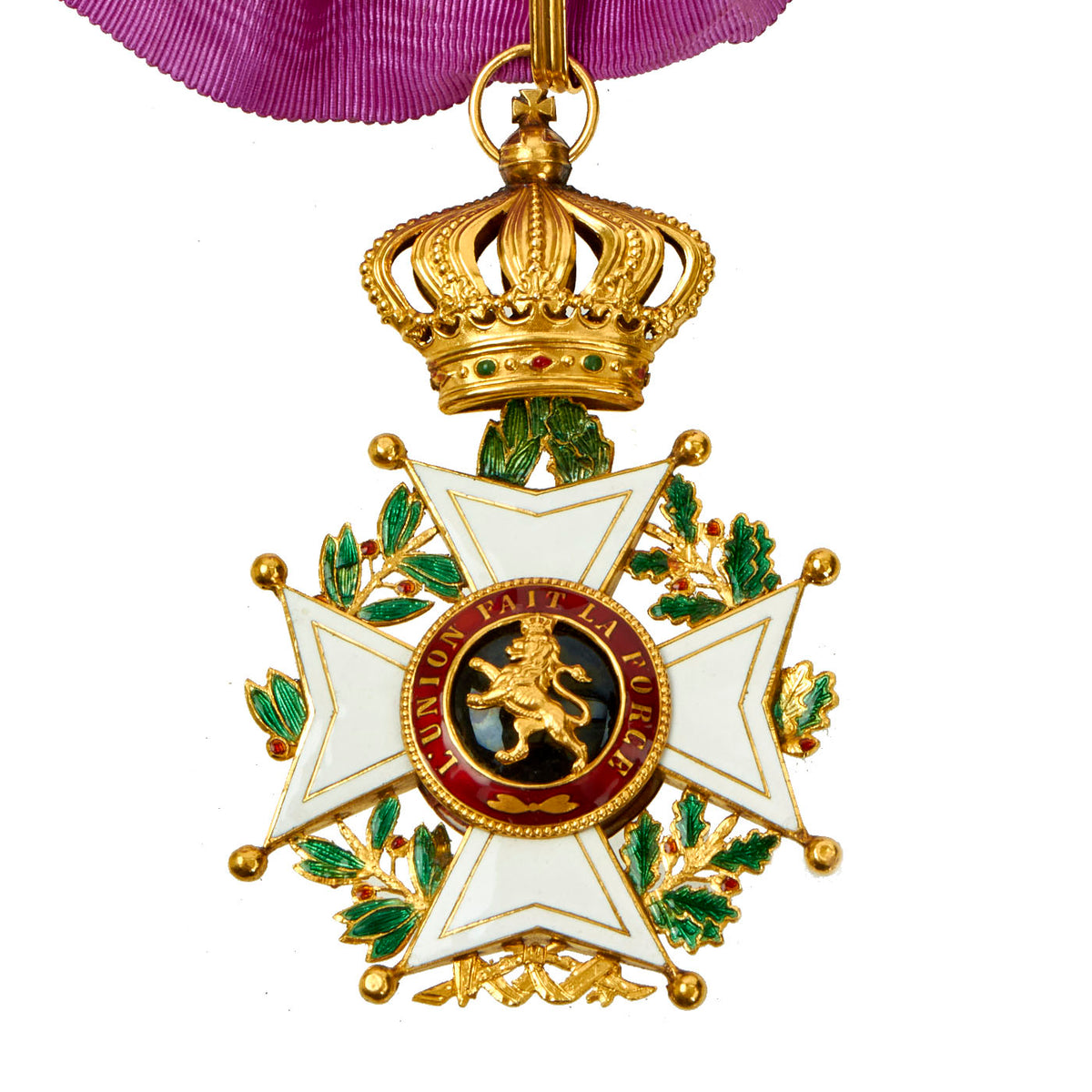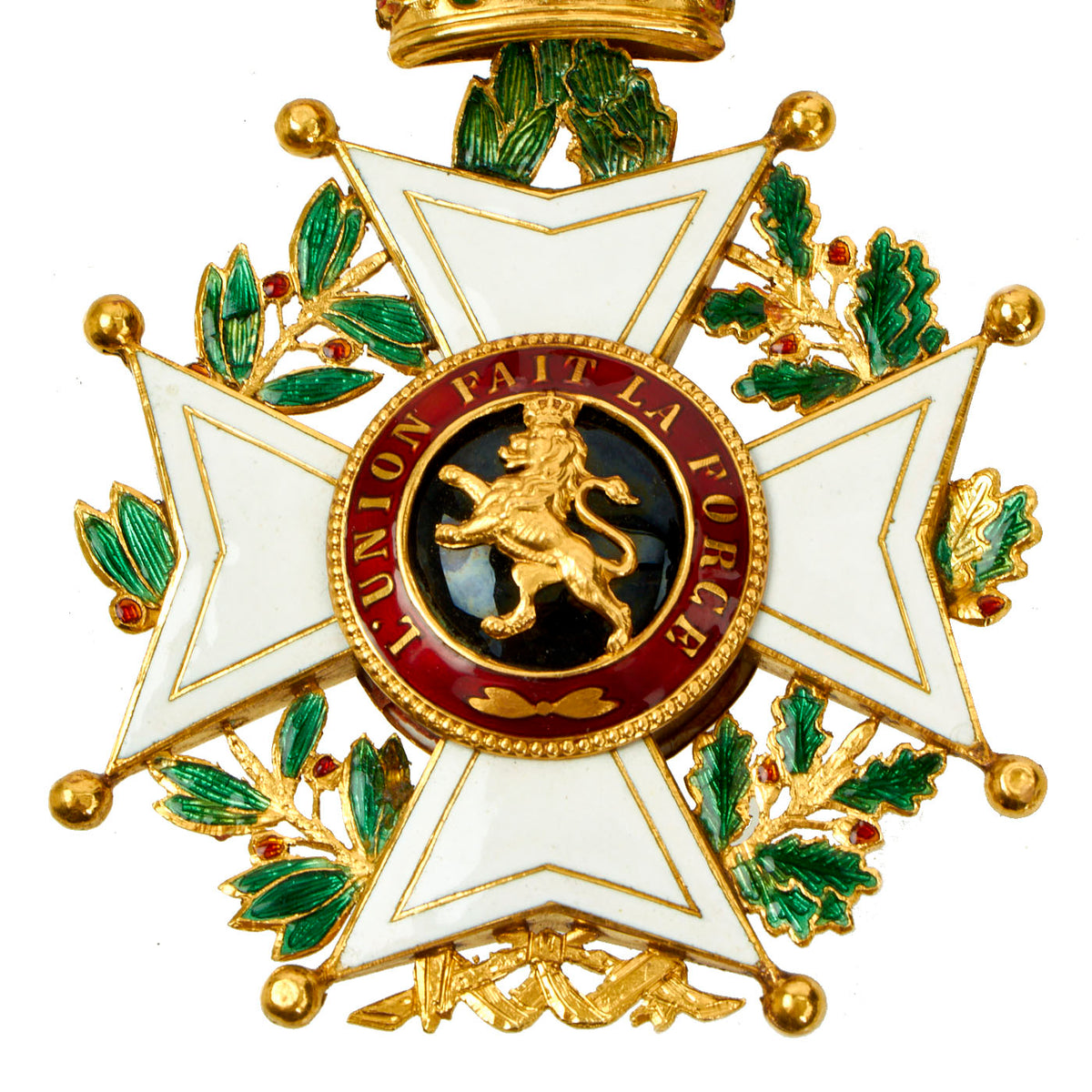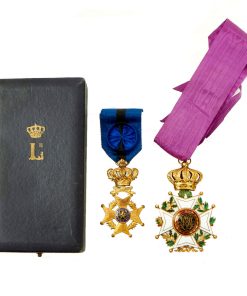Original Belgian 20th Century / 21st Century Belgian Order of Leopold Medal Lot – 2 Items Original Items
$ 325,00 $ 97,50
Original Items: Only One Lot of 2 Available. Leopold II was the second King of the Belgians from 1865 to 1909 and the self-made autocratic ruler of the Congo Free State from 1885 to 1908.
Born in Brussels as the second but eldest surviving son of Leopold I and Louise of Orléans, Leopold succeeded his father to the Belgian throne in 1865 and reigned for exactly 44 years until his death, the longest reign of a Belgian monarch to date. He died without surviving legitimate sons. The current Belgian king descends from his nephew and successor, Albert I. He is popularly referred to as the Builder King in Belgium in reference to the great number of buildings, urban projects and public works he commissioned.
Leopold was the founder and sole owner of the Congo Free State, a private project undertaken on his own behalf as a personal union with Belgium. He used Henry Morton Stanley to help him lay claim to the Congo, the present-day Democratic Republic of the Congo. At the Berlin Conference of 1884–1885, the colonial nations of Europe authorized his claim and committed the Congo Free State to him. Leopold ran the Congo by using the mercenary Force Publique for his personal gain. He extracted a fortune from the territory, initially by the collection of ivory and, after a rise in the price of natural rubber in the 1890s, by forced labor from the native population to harvest and process rubber.
Leopold’s administration of the Congo Free State was characterized by atrocities and systematic brutality, including torture; murder; and the amputation of the hands of men, women and children when the quota of rubber was not met. In 1890 and in one of the first uses of the term, George Washington Williams described the practices of Leopold’s administration of the Congo Free State as “crimes against humanity”.
These and other facts were established at the time by eyewitness testimony, on-site inspection by an international commission of inquiry, and the 1904 Casement Report. Modern estimates for the Congolese population decline during his rule ranges from 1 million to 15 million. Some historians argue against these figures by citing the lack of reliable censuses, the enormous mortality caused by smallpox and African trypanosomiasis and the fact that there were only 175 administrative agents in charge of rubber exploitation. In 1908, the reports of deaths and abuse and pressure from the Congo Reform Association and other international groups induced the Belgian Government to take over the administration of the Congo from Leopold as a new territory; the Belgian Congo.
The Items In This Lot:
– Order of Leopold II in Gold, Commander: The Order of Leopold II is an order of Belgium and is named in honor of King Leopold II. The decoration was established on 24 August 1900 by Leopold II as Sovereign of the Congo Free State and was in 1908, upon Congo being handed over to Belgium, incorporated into the Belgian awards system. The order is awarded for meritorious service to the sovereign of Belgium, and as a token of his personal goodwill. It can be awarded to both Belgians and foreigners, and is seen as a diplomatic gift of merit.
The order has become a long service order for people in the civil service and is awarded alternatively with the Order of the Crown, as the Order of Leopold is awarded under rare circumstances. The order currently stands third after the Order of Leopold (1st) and the Order of the Crown (2nd) in the Belgian honors hierarchy. The Order of Leopold II is awarded by royal decree.
The badge of the order is a white-enameled Maltese Cross, in silver for the Knight class and in gold for the higher classes, with a green-enameled wreath of laurel and oak leaves between the arms of the cross. The obverse central disc features a lion on a black enamel background; the reverse central disc has the face-to-face monogram “LR” (for King Leopold II); both discs are surrounded by a red enamel ring with the motto “Unity Is Strength” in French (L’union fait la force) and in Dutch (Eendracht maakt macht). The cross is topped by a crown, which might have crossed swords (military division) or anchors (maritime division) underneath it. The civil division has neither swords nor anchors like this example.
– Cased Order of Leopold in Gold With Crossed Swords, Officer: The badge of the Order is a metal Maltese Cross, in silver for the Knight class and in gold for the higher classes, with a wreath of laurel leaves of the same metal between the arms of the cross. The obverse central disc features a lion on a black enamel background surrounded by a blue enamel ring with the motto “Unity Is Strength” in French (L’union fait la force) and in Dutch (Eendracht maakt macht). The badge is topped by a crown of the same metal.
Both are in lovely condition and comes more than ready for further research and display.
Fast Shipping with Professional Packaging
Thanks to our longstanding association with UPS FedEx DHL, and other major international carriers, we are able to provide a range of shipping options. Our warehouse staff is expertly trained and will wrap your products according to our exact and precise specifications. Prior to shipping, your goods will be thoroughly examined and securely secured. We ship to thousands clients each day across multiple countries. This shows how we're dedicated to be the largest retailer on the internet. Warehouses and distribution centres can be located throughout Europe as well as the USA.
Note: Orders with more than one item will be assigned a processing date depending on the item.
Before shipping before shipping, we'll conduct a thorough inspection of the items you have ordered. Today, the majority of orders will be delivered within 48 hours. The delivery time will be between 3-7 days.
Returns
The stock is dynamic and we cannot completely manage it because multiple stakeholders are involved, including our factory and warehouse. So the actual stock may alter at any time. It's possible that you may not receive your order once the order has been made.
Our policy is valid for a period of 30 days. If you don't receive the product within 30 days, we are not able to issue a refund or an exchange.
You can only return an item if it is unused and in the same state as the day you received it. You must have the item in its original packaging.
Related products
Uncategorized
Uncategorized
Uncategorized
Uncategorized
Uncategorized
Uncategorized
Uncategorized
Uncategorized
Uncategorized
Armored Burgonet Helmet & Polearm from Scottish Castle Leith Hall Circa 1700 Original Items
Uncategorized
Uncategorized
Uncategorized
Uncategorized
Uncategorized
Uncategorized
Uncategorized
Band of Brothers ORIGINAL GERMAN WWII Le. F.H. 18 10.5cm ARTILLERY PIECE Original Items
Uncategorized
